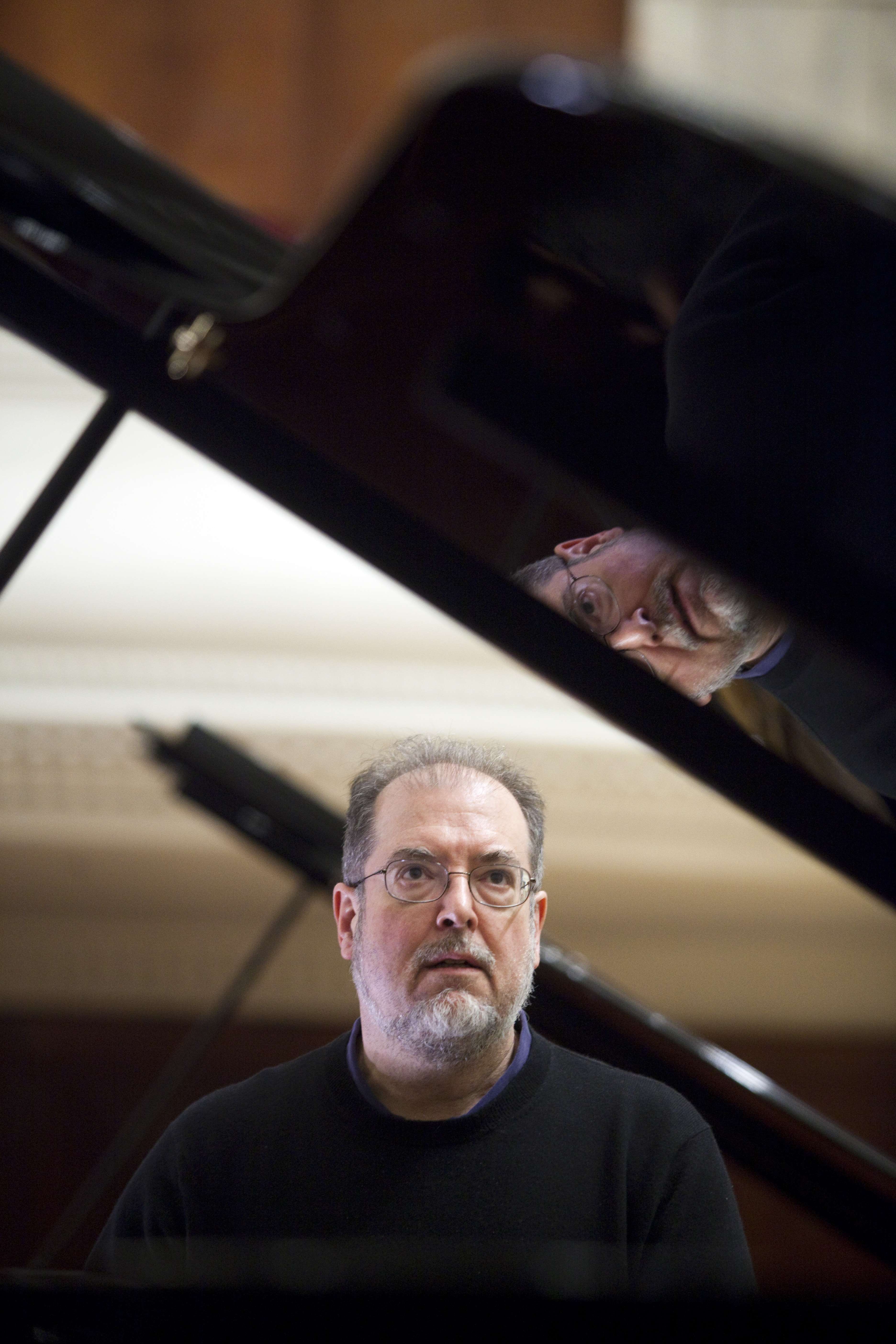|
Back
A Master Surveys the Master New York
Isaac Stern Auditorium, Carnegie Hall
04/29/2012 -
Johann Sebastian Bach: Fantasy and Fugue for Organ in G Minor, BWV 542 (transcribed by Franz Liszt, S. 463)
Franz Liszt: Fantasy and Fugue for Organ on “Ad nos, ad salutarem undam” (after Giacomo Meyerbeer), S. 259 (transcribed by Ferruccio Busoni) – Harmonies poétiques et religieuses, S. 173: “Bénédiction de Dieu dans la solitude” – Etudes d’exécution transcendante, S. 139: “Feux follets” – Valse oubliée No. 1, S. 215 – Nuages gris, S. 199 – Mephisto-Waltz No. 1 (Der Tanz in der Dorfschenke), S. 514
Garrick Ohlsson (Pianist)

G. Ohlsson (© Wojciech Grzedzinski)
Franz Liszt was a human Black Hole. Straddling Europe, spanning the 19th Century, he ceaselessly sucked in every passing line of poetry and drama, classical tomes, ancient music, eminent men, philosophies and creeds, literature and screeds, endlessly swooning over beautiful women, sighing over beautiful vistas...
Nothing escaped his absorption, and everything he absorbed was transformed into music.
Not that we were aware of this growing several decades ago. To us, Liszt was a tawdry uninhibited purveyor of showoff music. We heard Les Préludes, a Mephistophelian dance or two, and those infernal ersatz rhapsodies. But we knew that Bach composed for the glory of God, Mozart created because it was his nature, and Beethoven wrote music to display his Promethean powers.
Liszt wrote to show off his fingers, but he wasn’t really...well...profound.
Then... then came Arrau and Brendel and Anda. And Roger Dawltry in Ken Russell’s magniloquent Lisztomania. And Liszt was rediscovered. The music was extravagant, sometimes uncritically awful (Liszt didn’t have the equivalent of Beethoven’s notebooks). But in its massive archives was thought and dignity, the most powerful urges balanced with demonic deviltry.
Above all, Liszt was always true to himself. And in that way, he was always the artist.
Yesterday afternoon Garrick Ohlsson presented his Liszt, not so much a recital as a Lewis-and-Clark continental survey from the rarest epics to, yes, the Mephisto Waltz. The latter may have been meant to please the overflow audience (those outside Carnegie Hall looked not so much crestfallen as Liszt-less), and all was satisfying. But Franz Liszt, as Mr. Ohlsson showed from the first notes of the Bach transcription, used his genius because people out there–out in the drawing rooms or bed-chambers or Carnegie Hall–wanted to be moved.
Mr. Ohlsson moved us because he played his Steinway Grand as a very grand piano. His musicianship has been so carefully crafted over the years that he doesn’t need excess pedal, he certainly doesn’t need excess retards to make his points. The audience might have been overwhelmed by the performances, but they were always aware that this was music by Franz Liszt, not Garrick Ohlsson.
When Lang Lang plays Liszt, one of his germinal composers, one is always aware that the pianist is talented, clever, brilliant. The composer is his tool. When Garrick Ohlsson plays Liszt, we don’t have time to think about who is playing, for the music itself is such a thill.
Mephisto Waltz is indeed great music, as a showpiece. But just before that, Mr Ohlsson showed Liszt the futurist in Nuages gris. At first, with its blurred pedals and slowly moving figures, it sounds like Debussy. But so amorphous are the sounds that one wouldn’t be surprised to know that Liszt had used a primitive tone row.
(He didn’t, but he could have.)
The religious Liszt was played in the “Benediction”, the love of ancient music was in the very first piece, a transcription of Bach. And of course the “Feux Follets” was Liszt the technical exhibitionist.
All of this was played with dignity, with as little sheer flamboyance as the music allowed. Yet Mr. Ohlsson outdid himself in a work which I had never heard before, and which Liszt didn’t exactly write.
This was a melange of composers. Meyerbeer with a chorale from Le Prophète, Liszt taking that not as a transcription but a fantasia on which to lead his music for organ. And finally Busoni taking the two composers and making a transcription for piano.
Why is this so rarely played? The length itself, just over thirty minutes, gives it a gravity for any recital. Its digital wonders may overwhelm its “serious” side, but the three interlocking movements do have a Liszt sonata-form depth. And for the pianist, it is an outstanding challenge.
Mr. Ohlsson played the outer movements with vehemence, but never forgot the original chorale (which sounded a bit like “Happy Birthday”). The central Adagio was as poetic as anything Liszt ever wrote. Others might take it with great simplicity or poetic dreaming. Mr. Ohlssen played it semplice. Methinks that Liszt would have been a bit jealous at the performance, but as a rare unselfish artist, he would certainly have approved.
Harry Rolnick
|